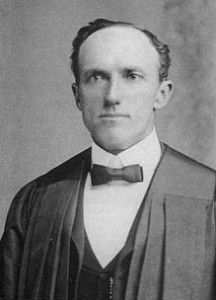Dr. Edgar L. Hewett (1865–1946) was founding president of the School of American Archaeology (later known as the School of American Research) and was appointed director of exhibits for the Panama-California Exposition. Hewett controlled the ethnological character of the Exposition. Hewett acquired exhibits for the Indian Arts, Science and Education, Fine Arts and California State Buildings. The last, despite its name, was devoted to the display of Maya artifacts, stelae and monuments. As a result of Hewett’s intervention, officials in New Mexico agreed to set up a special exhibit—the largest of the state exhibits—in a modified replica of the Mission Church of San Esteban del Rey at Acoma, easily the most impressive architecturally of the Exposition’s state buildings.
Working together, Collier and Hewett persuaded Edward P. Ripley, president of the Santa Fe Railway, to set up an exhibit of living Indians in surroundings that looked like those in their native lands. By sharing their different points of view, these men managed to create an idyllic picture of Native Americans as a gentle, colorful, primitive people who lived close to the earth. Indians may have been on display, but they did not cater to white people’s prejudices as did the abused Igorots, from the Philippines, at other United States expositions. Hewett suggested that the Santa Fe exhibit highlight the accomplishments of Indians. He recommended that his colleague, Jesse L. Nusbaum, be hired as superintendent of construction of the “Painted Desert” exhibit.
Along with Alice Klauber, chairperson in charge of the Exposition’s art department, and artist Robert Henri, Hewett helped to secure paintings by eleven American artists representing the Ash Can and Impressionist schools for mounting in the Fine Arts Building, on the opposite side of the quadrangle from the California Building.
…adapted from Balboa Park and the 1915 Exposition by Richard W. Amero.

